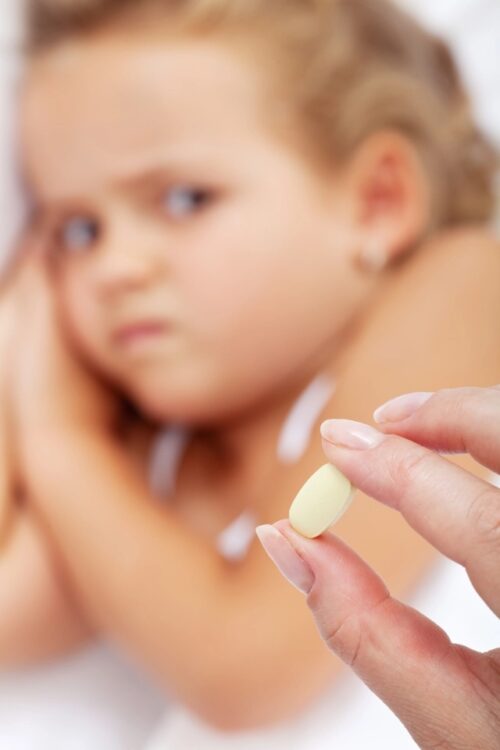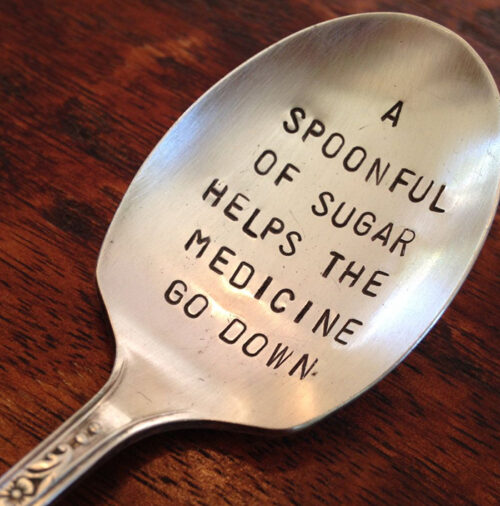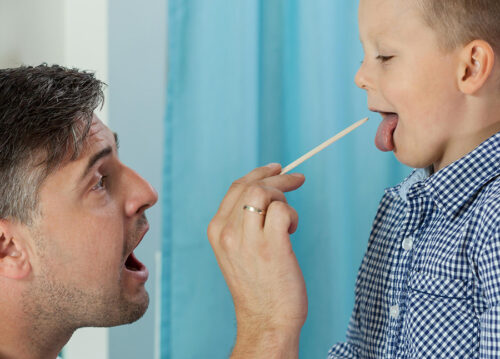Parenting: How To Give Medicine To A Child
Mary Poppins giving medicine
Giving Medicine To A Child
FIVE secret tricks
by Gregory A. Barrett, M.D.
So, you’ve taken your child to the office, the pediatrician has made a diagnosis, and you have been provided with a prescription. Next you proceeded to drive to the pharmacy, waited patiently to have the prescription filled, paid for it, driven home, and read the instructions. So far, so good. But now the real fun begins. How on earth are you going to get your child to take it? Well, parents, you have come to the right place. Courtesy of having had two extremely reluctant medicine-takers of my own, I have by necessity put in a fair amount of study and observation on this particular topic. For your consideration presented below are the options I refer to as The Five Secret Tricks of how to give medicine to a child.
1. Veterinary Method

Anyone out there ever tried to give a pill to a cat? Well, basically the same approach applies here. It is kind of like the technique you applied when you first attempted to brush your eighteen-month-old’s teeth. Yep, hold him or her down, pry open the mouth, jam the medicine inside, and hold the jaws shut. Eventually, after an hour or two, they have to swallow…don’t they? Effective but exhausting, this technique unfortunately leads to the cumulative negative effect of each subsequent dose becoming harder to administer than the previous.
2. Julie Andrews Method

A Spoonful of Sugar Helps the Medicine Go Down. In my early adolescent years I had two serious crushes, Julie Andrews and Sophia Loren. Ms. Loren, now, that one should be rather obvious. But Julie Andrews? Honestly, how many twelve-year-old boys do you know who couldn’t sleep for a week after they saw “The Sound of Music?” Weird, huh?
Anyway, the second trick is derived from her somewhat less breathtaking but still spectacular performance as Mary Poppins. Yes, a spoonful of sugar oftentimes does indeed help. With rare exceptions, you will be allowed to cheat and mix the despicable potion in something more palatable. All’s fair in love, war, and getting your child to take a foul-tasting medication. Make sure you check with your pharmacist first, but it they give their seal of approval stir in a little sucrose and hopefully the Poly-Vi-Sol with Iron will do down “in the most delightful way.”
3. Deception Method

“Hey, Sarah, you want to do something fun? Let’s pretend you’re going to the dentist. Okay? Good! Now, open your mouth and say, ‘Ahhhh.’”
Well, that wasn’t too clever, was it? Hmm. How about this?
“I think I hear a birdie in your mouth. Yes, by golly, I DO hear a birdie in your mouth! Open your mouth, Jimmy, let me see that little birdie.”
You don’t like that one, either? Ehh, maybe I’m a little out of practice. But the point here is to somehow distract your child and then slip in the knife – or, in this case, the medicine – when they’re least expecting it.
“Applesauce, applesauce, Augmentin, applesauce….”
4. Job Method

“Job,” like in the Bible, not “job,” as in, “I see they’re hiring at the grocery store, David. Why don’t you see if you can try to lift yourself off the couch and go pick up an application?” This is a very under-appreciated technique, and in my experience one of the most effective. There is no time limit on how quickly a medication has to be delivered, so use this to your advantage. Personal observation has taught me that if you try to propel a tablespoon of a substance that smells and tastes like rusty nails down your child’s throat in one fell swoop it is highly likely that shortly afterwards you will be wearing the stuff. However, if you administer the same yecchy medicine literally a drop at a time over a half hour or so you may be surprisingly successful. Patience – that’s the key.
5. Acupuncture Method

I don’t mean sticking needles in your child’s feet as an alternative to the prescribed medication, although you may feel frustrated enough after battling them for a while to consider this or worse. I am talking about bypassing the oral route altogether and having the drug given as an injectable.
Yes, pediatricians still give shots, just like doctors of yesteryear. We don’t advertise it because in general intramuscular administration of a medication offers no true advantage as far as effectiveness, and there is no denying the fact that there is some pain involved. But if your child is extremely non-compliant don’t be afraid to ask your physician if this might be an option. Not infrequently the shot only has to be done once, and thereafter your child may come around to a different way of thinking.
Children seem to have the memory of an elephant about two things, vomiting and needles. Reminding them on the occasion of future illnesses that the doctor could give them a shot if they would prefer can be a powerful inducement to the development of an entirely new and more receptive attitude about taking medicine.
Well, there you have it. These are my suggestions on this extremely challenging topic, and over the years I’ve found them to be fairly useful. I hope they help.
“The hills are alive…”
☤


